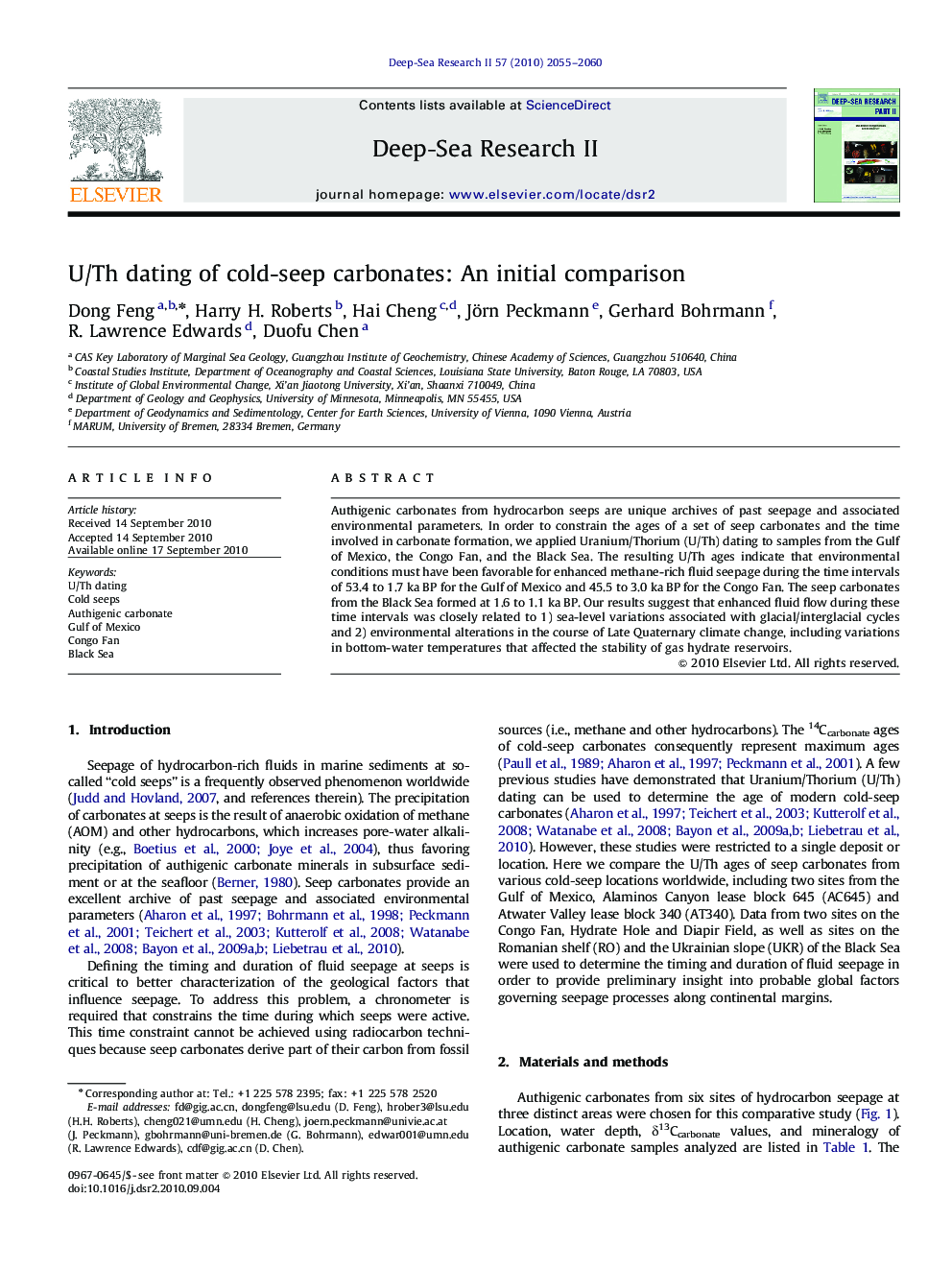| Article ID | Journal | Published Year | Pages | File Type |
|---|---|---|---|---|
| 6384370 | Deep Sea Research Part II: Topical Studies in Oceanography | 2010 | 6 Pages |
Abstract
Authigenic carbonates from hydrocarbon seeps are unique archives of past seepage and associated environmental parameters. In order to constrain the ages of a set of seep carbonates and the time involved in carbonate formation, we applied Uranium/Thorium (U/Th) dating to samples from the Gulf of Mexico, the Congo Fan, and the Black Sea. The resulting U/Th ages indicate that environmental conditions must have been favorable for enhanced methane-rich fluid seepage during the time intervals of 53.4 to 1.7 ka BP for the Gulf of Mexico and 45.5 to 3.0 ka BP for the Congo Fan. The seep carbonates from the Black Sea formed at 1.6 to 1.1 ka BP. Our results suggest that enhanced fluid flow during these time intervals was closely related to 1) sea-level variations associated with glacial/interglacial cycles and 2) environmental alterations in the course of Late Quaternary climate change, including variations in bottom-water temperatures that affected the stability of gas hydrate reservoirs.
Related Topics
Physical Sciences and Engineering
Earth and Planetary Sciences
Geology
Authors
Dong Feng, Harry H. Roberts, Hai Cheng, Jörn Peckmann, Gerhard Bohrmann, R. Lawrence Edwards, Duofu Chen,
